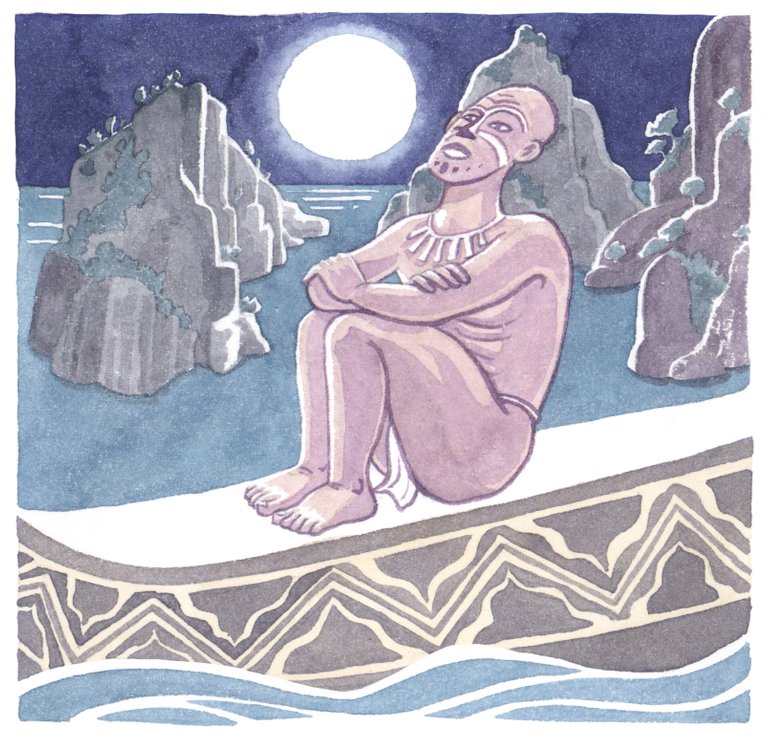
By Ana Santiso.
Watercolor on paper.
12 cm x 13 cm.
Authentication: 777b934c113cb598afcae5d755a7162baf1a22d74ee98455669065ab14116496
(link to https://ardor.tools/cloud/IGNIS/777b934c113cb598afcae5d755a7162baf1a22d74ee98455669065ab14116496)
Token ID: 4260264551264911473
((link to https://www.ardor.world/en/ignis_reporting/asset/4260264551264911473/)
CREATURE: In the mythology of the Tazmanian aboriginals, Droemerdene was the second son of the Sun and the Moon. His brother, Moinee, was the primitive creator of the world, giving life to the land and the seas. Then he gave a body from the earth to a spirit that wandered the world, and thus created the first man, who had the form of a kangaroo. Moinee also created the kangaroos.
Droemerdene emerged from the Canopus star and helped men change shape. He removed the tail, gave them joints in the legs "so that they could rest", and thus managed to differentiate themselves from the kangaroos.
This action provoked a war between the brothers, which took place in heaven and in which many demons participated. In the end the two died: Moinee fell to earth as a standing stone at Cox Bight, while Droemerdene fell into the sea at Louisa Bay.
CULTURE: The aboriginal Tasmanian (Palawa in their language) came to their territory around 40000 BC, when it formed a penisula of Australia. Sea level rise cut access c. 6000 BC, leaving since then incommunicado from abroad on his island for 8000 years, until the arrival of the English.
With a population of a few thousand people (up to 15,000 according to some estimates), the aboriginal exercised a way of life based on hunting and gathering. Without dwellings, accustomed to sleeping outdoors and without clothes, they were nomadic people who during the summer lived in the interior plateau, and in the winter they moved to the coast. His spirituality, of animistic type, read in the night sky and in the natural life a divine order.
The arrival of the English in the early nineteenth century led to an almost complete genocide of these peoples, which was completed in a few decades. The abduction of women and children, the exile and the diseases spread by the colonists were reducing their population until, in 1833, there were only 200 aborigines, who were expelled to the neighboring Furneaux Islands. In 1905 the last complete aboriginal died.
However, part of their culture and their ancestry survives in the descendants of the women abducted and raped by the settlers. The recovery movement of culture and traditions Palawa continues, despite everything, resisting the passage of time.
CURRENT POPULATION: 23,572